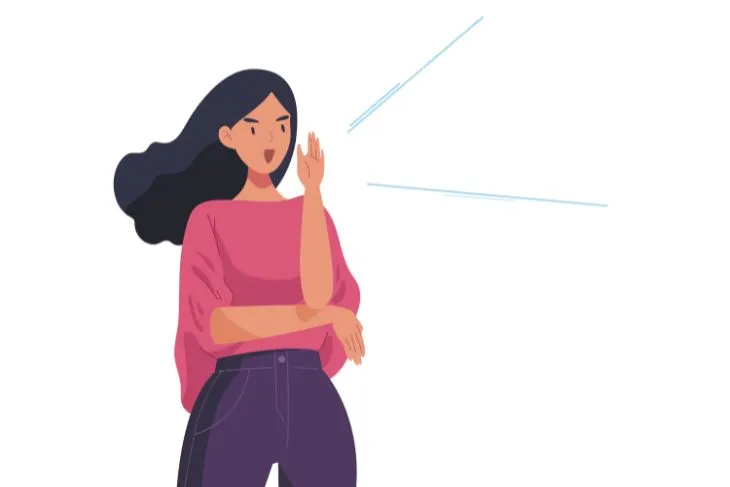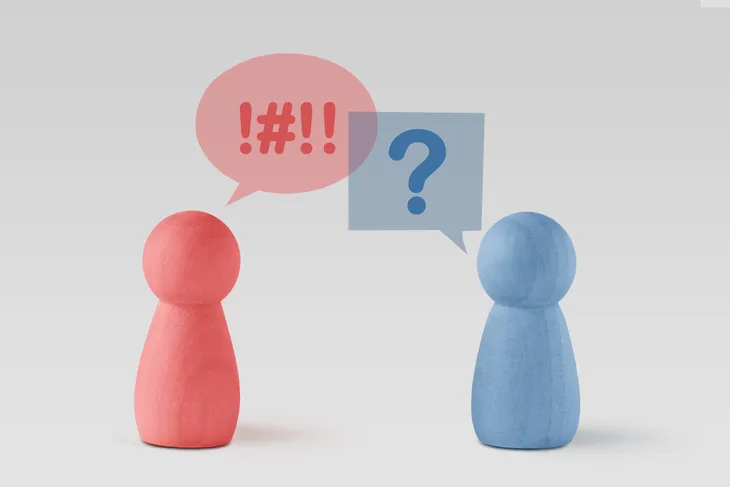- Males and females are obviously biologically different, but do their differences go even further than that?
- It turns out, there are some subtle but key differences that can hugely impact whether a person feels heard, is comfortable, or even understood.
- From body language, to verbal skills, and even down to the tones of their voice. We look into all the differences in how men and women communicate.
Most of us are familiar with the saying “men are from Mars and women are from Venus.” Obviously, this is not true. This popular saying was coined to highlight just how different men and women are. So different they couldn’t even be from the same planet! Hence why there are so many stereotypes pertaining to men and women, particularly when it comes to communication.
In this article, we examine whether or not men and women communicate differently. For the most part, how good or bad a person communicates is an individual trait based on personality, environment, and the relationship. However, we did find some slight, very generalized differences between men and women. Let’s take a look…
Women Have Better Verbal Skills
While looking at differences between men and women, some people might wonder if either gender has areas with greater skill. For example, men tend to outnumber women in careers involving math and science. Is this because they are more skilled in this field? According to studies, both boy and girl infants performed equally as well on tasks involving mathematic ability.
Despite these findings, questions and theories around gender differences still persist. “In 2007, Diane Halpern, PhD, and colleagues including Hyde published a consensus statement regarding that disparity. Indeed, studies suggest that women tend to score slightly higher than men on verbal abilities, while men tend to have a slight edge when it comes to visuospatial skills, the researchers report,” writes the American Psychological Association (APA).
Men Talk More Than Women
Thanks to stereotypes most people likely think that women talk more than men, but a lot of research has been done in this department and most of it found that men actually talk more than women. However, it often depends on the environment. An article published in The Guardian titled “What Language Barrier,” examined these studies and found that the amount a person talks directly relates to status, not gender. This is particularly true in formal, public contexts.
Unfortunately, men are more likely than women to occupy high-status positions. The article goes on to explains that this gap can be closed or reduced if the subjects are discussing a topic that both genders view as a female area of expertise. “That may be why some studies find that women talk more in domestic interactions with partners and family members: in the domestic sphere, women are often seen as being in charge. In other spheres, however, the default assumption is that men outrank women, and men are usually found to talk more,” writes the article.
Report vs. Rapport
Men and women can differ in many ways when it comes to communications, from the tone of their voice, their posture while saying it — even down to what words they choose to say. According to Point Park University, men tend to use more of a “report” style of communication. Basically this means they’ll use speech that contains facts and data, and aim to solve problems. Where they fall short is that they’ll leave our personal information or anecdotes. The source also notes that men tend to dominate a conversation.
On the other hand, women’s conversation tends to follow more of a “rapport” style. When they talk, their choice of words and overall communication aims to build relationships. They do this by sharing more personal information and emphasizing the inclusion of all speakers.
Competitive vs. Collaborative
In this particular case, the stereotype of men being more competitive does pan out. But of course, this isn’t to say that women aren’t competitive too. However in general, “men want to compete more with others…whereas women tend to want to collaborate more and socially bond,” says relationship experts and real-life couple Antia and Brody Boyd when talking to Slice.
Carol Kinsey Goman wrote an article for Forbes where she presented similar findings. In her article, Goman states that women tend to be better in collaborative environments because their listening skills, inclusive body language, and empathy is more valuable. Men on the other hand are thought to have a more “take charge” approach. This might be more effective in situations where decisiveness is critical.
Criticism vs. Appreciation
Another way to look at communication and how it differs between males and females is to look at how they talk to members of the same gender. For example, when men talk to other men, they tend to be a little more critical than when they would talk to a woman, or versus how a woman would talk to another woman.
“Men tend to bond with other men through playfully criticizing each other and challenging each other,” says Brody in an article published on Slice. His partner Antia adds to this by offering a woman’s perspective, “Whereas women tend to bond more with other women through appreciating each other and complimenting each other.”
Tonal Differences in Men and Women
Verbal communication is about more than just the words we choose to say. You might assume that word choice is the most important part of communicating, but tone of voice is arguably even more impactful. In fact, the way or tone of voice a person uses to say something can change the entire meaning of the sentence. When it comes to males and females, women have more tonal range than men.
“Women sound more emotional because they use approximately five tones when speaking — and their voices rise under stress,” writes Goman. “Men use only approximately three tones and their deeper voices sound more confident. But, because men don’t have a wide vocal range, they have a tendency to become monotone.”
Men vs. Women in Negotiations
A 2019 study gathered 146 undergraduate students of all different ethnicities in same or mixed-gender pairs for “both a self-disclosure task, where the goal of the conversation was to facilitate sharing and listening between friends, and a negotiation task, where friends had to make a decision together and make a case for their point of view,” writes Mind Body Green. Their conversations were recorded and analyzed to see if there were any key differences between how men and women communicate.
In general, the findings showed that men are much more forceful when stating a course of action. Mind Body Green provides the example of a man telling another person to “put down ‘water’ on our list.” Women tend to use more justifications and are more indirect with their suggestions by giving subtle requests. They also ask for other peoples opinions or support before stating their own.
Men vs. Women with Body Language Cues
When we think of communication our minds go right to verbal communication. But actually body language is another form of communication that can be quite effective. We all do it and sometimes might not even realize it! When it comes to women, their body language tends to be a lot warmer, says Goman. This is likely because they tend to be better listeners. They focus on who’s speaking by turning their head and torso towards them. “They lean forward, smile, synchronize their movements with others, nod and tilt their heads (the universal signal of listening).”
On the other hand, Goman found that men send more “status” signals which are done through an array of dominant behaviors like side-to-side head shaking and expressions of anger and disgust. “They stand tall or they sprawl, sitting with their legs spread or widely crossed, their materials spread out on a conference table, and their arms stretched out on the back of a chair,” she says.
Men vs. Women’s Stance During Conversations
Similar to body language, another angle of communication that can be looked into is physical space during conversations. Experts notice differences in the amount of physical space men and women have when talking. This applies both with each other and of members of the same gender.
Men will also angle their bodies slightly during a conversation whereas women tend to “square up” with one another. According to Goman, the reason for this is because that stance tends to be more confrontational (when exhibited by two males). For example, two men who don’t know each other very well will have a greater distance between them, says Goman, more so than two women who’ve just met.
Men vs. Women in Physical Space During Conversations
Continuing with non-verbal communication, it’s also been noted that men have a more domineering presence during conversations. This might have to do with the fact that men are larger than women by nature, but also has to do with how they maneuver their bodies.
Men will expand into a physical space, whereas women tend to condense themselves (i.e., keeping elbows to their sides, crossing their legs, or stacking their materials in small piles). “Men’s expansive posture not only looks more confident, it helps create the corresponding feeling of confidence,” writes Goman. “By contrast, when a woman’s posture makes her look smaller, it also makes her feel less powerful.”
Direct vs. Indirect
A common mishap in relationships is when one person feels like they aren’t being understood. Most of us have experienced this at one point or another. If this happens, ask yourself “did I clearly communicate what I need or am I expecting the other person in this relationship to just know?”
According to Brody and Antia, women are more likely to not be direct when it comes to communicating their needs. At least in comparison to men. “In general, women tend to want to communicate their needs and desire more indirectly, whereas men tend to be more direct and straightforward in communicating what they want, as well as their needs in the relationship,” writes Slice.
Ways to Improve Communication
Communication doesn’t necessarily come easily to everyone and while we’re often conversing with people in the same language, we’re don’t always understand each other. Luckily, it’s a skill that can be learned and perfected.
WebMD provides four basic ways to improve communication. The first is to be mindful of tone as this can make all the difference in how it lands with the other person. Also, the volume at which a person speaks tells the other person a lot about the sentiment behind those words. Someone yelling is likely angry, whereas speaking softly is soothing and comforting. Third, posture during a conversation can indicate how a person feels towards the other. For example, leaning in shows interest and turning away shows disinterest.
Lastly, people instinctively read the facial expressions of others and many are universal across cultures (i.e. sadness, anger, happiness). While these tend to happen unconsciously, people can communicate how they are feeling by consciously changing their expression.















